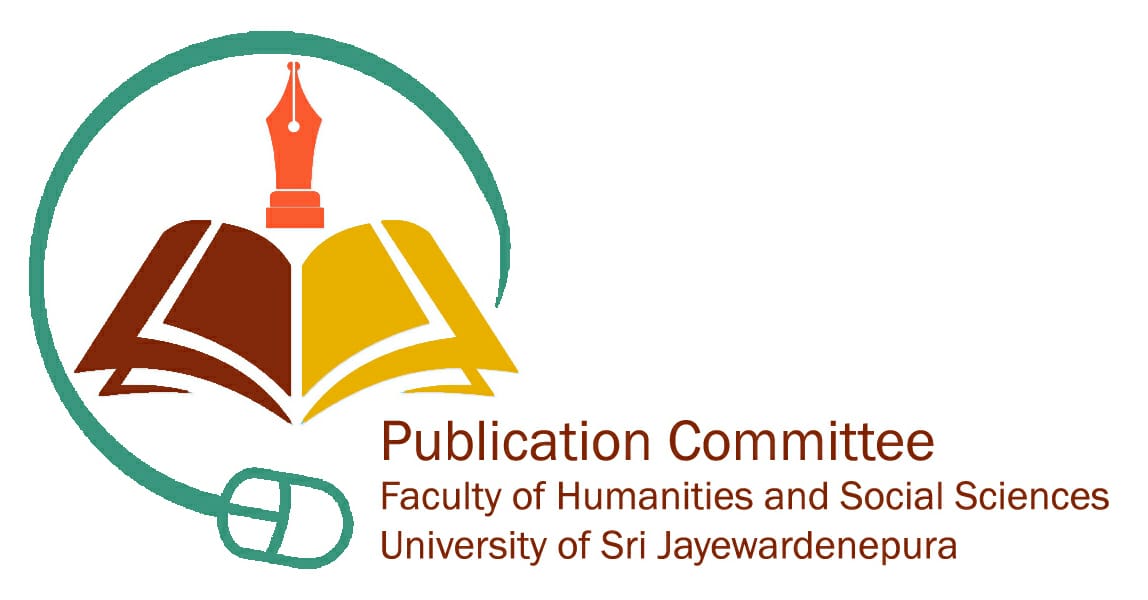No controversies can be drawn regarding the fact that children are the future of a nation. As legally defined in the UN Convention of the Rights of the Child, a child means every human being below the age of eighteen years, unless under the law applicable to the child, majority is attained earlier. Though the Universal Declaration of Human Rights (UDHR) has ensured everyone’s; including children’s right to free employment and conducive working conditions, child labor violates such due rights. But not all tasks performed by children are identified as child labor. As emphasized by Khanam and Rahman (2008), child’s age and performed task are the key indicators in defining child labor. Therefore, International Labor Organization (ILO) has defined “work that deprives children of their childhood, their potential and their dignity, and that is harmful to physical and mental development” as child labor.
A wide range of related themes from causes to consequences has been explored in literature on child labor. First, as highlighted by Hussain et al. (2017), child labor has been practiced in commonplace, basically in developing and underdeveloped nations. ILO (2018) declares that agriculture is the sector, which represents highest share of child laborers. Next, Momen (2020) has excavated more and has identified how child labor is deep rooted in the cycle of poverty. Moreover, he emphasizes how child laborers are subjected to all forms of child abuse. Further, Giri (1965) has viewed this social problem in two perspectives. On one hand, his economic perspective has identified how children from lower social level are compelled to become child laborers in order to uplift the family’s income. On the other hand, his social perspective has analysed the social evils that the child laborer is exposed to. According to a research conducted in Pakistan, Hussain et al. (2018) have found parental illiteracy and unawareness as a leading cause of child labor. In addition, the contribution of unaffordability of education and dropping out from schools have been well explored by Zaman et al. (2014). In addition to that, National Policy on Eliminating Child Labour in Sri Lanka (2017) has identified the inadequacy of labor laws too causes child labor. Boyden, Ling and Myers (1998) have drawn an interesting point that even certain children consider child labor as a way to get ready to future careers and enthusiastically participate in. Finally, as identified by Tang et al. (2016) child labor the negative consequences of child labor are obvious both at micro and macro levels; not only to the child, but also to the society at large.
To provide a comprehensive understanding about how persistent this social problem is, some numeric representations are also incorporated. Hence, the latest global estimates by ILO and UNICEF (2021) indicate that at the beginning of 2020, there were 160 million children as child laborers, accounting for almost 1 in 10 of all children worldwide. The report further states that nearly half of all in child labor were performing hazardous work that make them vulnerable to various dangers. A recent report by ILO Country Office (2017) declares that, even in the Sri Lankan context, despite a sizable decline owing to the substantial measures taken, there were still 43,714 children (1%) in child labor as of 2016, of which majority were engaged in hazardous labor forms. Moreover, the report has identified key sectors where children are employed in; elementary occupations (43.8); service and sales (23.0%), plant and machine operators and assemblers (14.5%), craft (12.5%), and others (6.1%). Unfortunately, even among those who take up elementary occupations, many are involved in hazardous tasks like construction and manufacturing etc.
As indicated via the above statistics, child labor is prevalent as a key social pathology. Therefore, to uproot that, undermining the root causes of this multifaceted social problem is quite essential. As mentioned above, poverty is the most decisive factor of child labor today. When the income is not sufficient to fulfil basic human needs, some parents tend to utilize even their children as a source of income. Next, parental illiteracy accompanied by their negative attitudes towards education too makes this social problem more severe. Since illiterate parents do not know the importance of education in upward social mobility, they don’t perceive their acts as darkening their children’s future. Moreover, population growth is also another cause for child labor. According to the Malthusian theory, though population growth is in a geometric progression, production is always in an arithmetic progression. Owing to this gap, poverty in enhanced. As mentioned earlier, poverty is the most compelling reason for child labor. Taken from an economic point of view, one can argue that since child labor is a cheap source of labor and they do not demand for higher working conditions, many employers tend to employ children in their enterprises. Further, two surprising points need to be drawn. First, as identified by ILO, certain popular beliefs like child labor develops child’s skills and character, as well as girl child does not deserve education rights too causes child labor. Second, as some children consider child labor as an opportunity to get ready to future careers, they tend to participate in enthusiastically. After assessing above points, one can visualize the multifaceted nature of this social problem.
Also the negative consequences child labor has both on child and the society need to be discussed. First, a child laborer is denied not only his or her human rights, but also the childhood as well. It is basically because child labor compels the child to work under intolerable pressure, disgusting conditions while damaging his self-esteem. Second, it restricts every possible opportunity to continue education. On one hand it hinders child’s personal development, while on the other hand owing to such uneducated children, quality of a country’s human resources decreases. Thus, child labor can be recognized as an obstacle in the path towards development. Third, by being compelled to worst forms of child labor, the innocent child may become vulnerable to many health issues like asthma and tuberculosis. Specially such risks are common when working in underground, with machineries and in atmospheres concentrated with harmful particles. Next, the possibility of being neglected or abused physically, sexually, or mentally too is high. Moreover, unemployment too may become broadened as well. Owing to the fact that child labor is a cheap source of labor, cost of production is much lower when utilized. This may drive employers to employ children instead of the people who should be there at the labor market. But the culmination becomes obvious only when the vicious cycle of poverty is continued. Since a child labor is denied of education, the only possible way to break that too is missing. Hence, the always exploited child laborer can’t even imagine of a life with optimum quality of life.
If such negative consequences are occurring as a result, what should be done to solve the issue? Even though adequate quantity of related laws are there, are they properly implemented in practical usage? Hence, an attitude change is much needed. Also, implementing a minimum age for compulsory education is obviously effective. Further, observing whether the set minimum age limits in certain professions are practiced, is also essential. If poverty is the root cause of child labor, uprooting the tree called child labor won’t be possible without eradicating poverty. Therefore, ending child labor should be made a key concern in all poverty eradication programs. Thus, by ensuring an adequate level of living will aid to shed a positive light in the journey towards ending child labor. Since a positive correlation is obvious between education marginalization and child labor, allocating more for provisions to the education sector and ensuring compulsory education is essential. There, both the government and parents should be responsible to send their children to school instead of working sites, during the due age. Moreover, incorporating convention no.182 of ILO to local constitutions and defining both worst and hazardous forms of child labor too will be an effective solution. Without limiting themselves to the passing of bills, relevant stakeholders should be vigilant whether they are observed in practical level. Finally, if authorities can publicize the enterprises and forbid the products in where child labor is utilized, employers might a step backward and will think twice before employing a minor. To end child labor in agriculture sector, bringing down the rate of child laborers to zero can be incorporated to Good Agricultural Practices (GAP) as well. Even in implementing its key strategies, including a broader policy and strengthening enforcement, National Policy on Eliminating Child Labour in Sri Lanka (2017) has clearly outlined the importance of institutional structures, district level coordination and private-public partnership. Therefore, it is quite evident that a holistic and cross disciplinary approach is essential to end child labor in the years to come.
Throughout the above descriptions, most of the dimensions of child labor are explored. To end this social pathology, all the causes mentioned need to be addressed. Without waiting for others, each and every responsible citizen should voice against this and do whatever the thing he or she can do. Hence, it is the prime responsibility of everyone to ensure the innocent children’s right to a standard way of living and a brighter future. Let children be children!
Pasindu Pabasara Ranpatabendige
2 nd Year Undergraduate
Department of Criminology and Criminal Justice
References
Boyden, J., Ling, B., & Myers, W. (1998). What Works for Working Children, Sweden: Save the Children.
Child labour in Sri Lanka-At a Glance. (2017). Colombo 07: ILO Country Office for Sri Lanka and Maldives. https://www.ilo.org/wcmsp5/groups/public/—asia/—ro-bangkok/—ilo-colombo/documents/publication/wcms_616216.pdf
Convention on the Rights of the Child. (1989), UNICEF. https://www.ohchr.org/sites/default/files/Documents/ProfessionalInterest/crc.pdf
Giri, V.V. (1965). Labor problems in Indian industry. Bombay: Asia Publishing House.
Hussain, A., Mahmood, B., Chaudhry, A., & Batool, Z. (2018). Factors Causing Child Labour of Rural Children in Markets of Faisalabad City. Journal pf Agricultural Research, 56(2), 151-157. https://apply.jar.punjab.gov.pk/upload/1530961732_131_10._JAR_1145.pdf
Hussain, M., Saud, A., & Khattak, M. u. R. (2017). Socio-Economic Determinants of Working Children: Evidence from Capital Territory of Islamabad, Pakistan. Pakistan Administrative Review, 1(2), 145-158. https://www.ssoar.info/ssoar/bitstream/handle/document/54471/ssoar-par-2017-2-hussain_et_al-Socio-Economic_Determinants_of_Working_Children.pdf?sequence=1&isAllowed=y&lnkname=ssoar-par-2017-2-hussain_et_al-Socio-Economic_Determinants_of_Working_Children.pdf
International Labour Office and United Nations Children’s Fund. (2021). Child Labour: Global estimates 2020, trends and the road forward, ILO and UNICEF, New York. https://www.ilo.org/wcmsp5/groups/public/@ed_norm/@ipec/documents/publication/wcms_797515.pdf
International Labour Organization, Causes. https://www.ilo.org/moscow/areas-of-work/child-labour/WCMS_248984/lang–en/index.htm#:~:text=According%20to%20the%20experts%2C%20the,provide%20them%20with%20adequate%20nutrition
International Labour Organization. (2018). Ending child labor by 2025: a review of policies and programmes. ILO, Geneva. https://www.ilo.org/wcmsp5/groups/public/—ed_norm/—ipec/documents/publication/wcms_653987.pdf
International Labour Organization. What is child labour? https://www.ilo.org/ipec/facts/lang–en/index.htm
Khanam, R., & Rahman M.M. (2008). Child labour in developing countries: the role of education: poverty and birth order. Journal of Social and Economic Development, 10(2), 173-195. https://www.researchgate.net/publication/261511956_Child_Labour_The_Effects_of_Globalisation/link/0a85e534766fe230dc000000/download
Momen, Md. N. (2020), Child Labor: History, Process and Consequences. In Encyclopedia of the UN Sustainable Development Goals (pp.1-8). Springer https://www.researchgate.net/publication/340894698_Child_Labor_History_Process_and_Consequences/link/5f95829292851c14bce58819/download
Tang, C., Zhao, L., & Zhoa, Z. (2016). Child Labor in China. IZA Discussion Papers, No 9976. Bonn: Institute for the Study of Labor (IZA) https://ftp.iza.org/dp9976.pdf
The National Policy on Elimination of Child Labour in Sri Lanka. (2017). Colombo 5: Ministry of Labour, Trade Union Relations and Sabaragamuwa Development. https://www.ilo.org/wcmsp5/groups/public/—ed_norm/—ipec/documents/publication/wcms_717435.pdf
Universal Declaration of Human Rights. (1948). United Nations. https://www.ohchr.org/sites/default/files/UDHR/Documents/UDHR_Translations/eng.pdf
Worst Forms of Child Labour Convention, 1999 (NO.182). (1999). International Labour Organization. https://www.ilo.org/wcmsp5/groups/public/—ed_norm/—declaration/documents/publication/wcms_decl_fs_46_en.pdf
Zaman, S., Matin, S., & Kibria, A.M.B.J. (2014). A Study of Present Scenario of Child Labor in Bangladesh. IOSR Journal of Business and Management, 16(6), 25-36. https://www.shram.org/uploadFiles/20180221121525.pdf
Photo by Atul Pandey on Unsplash






